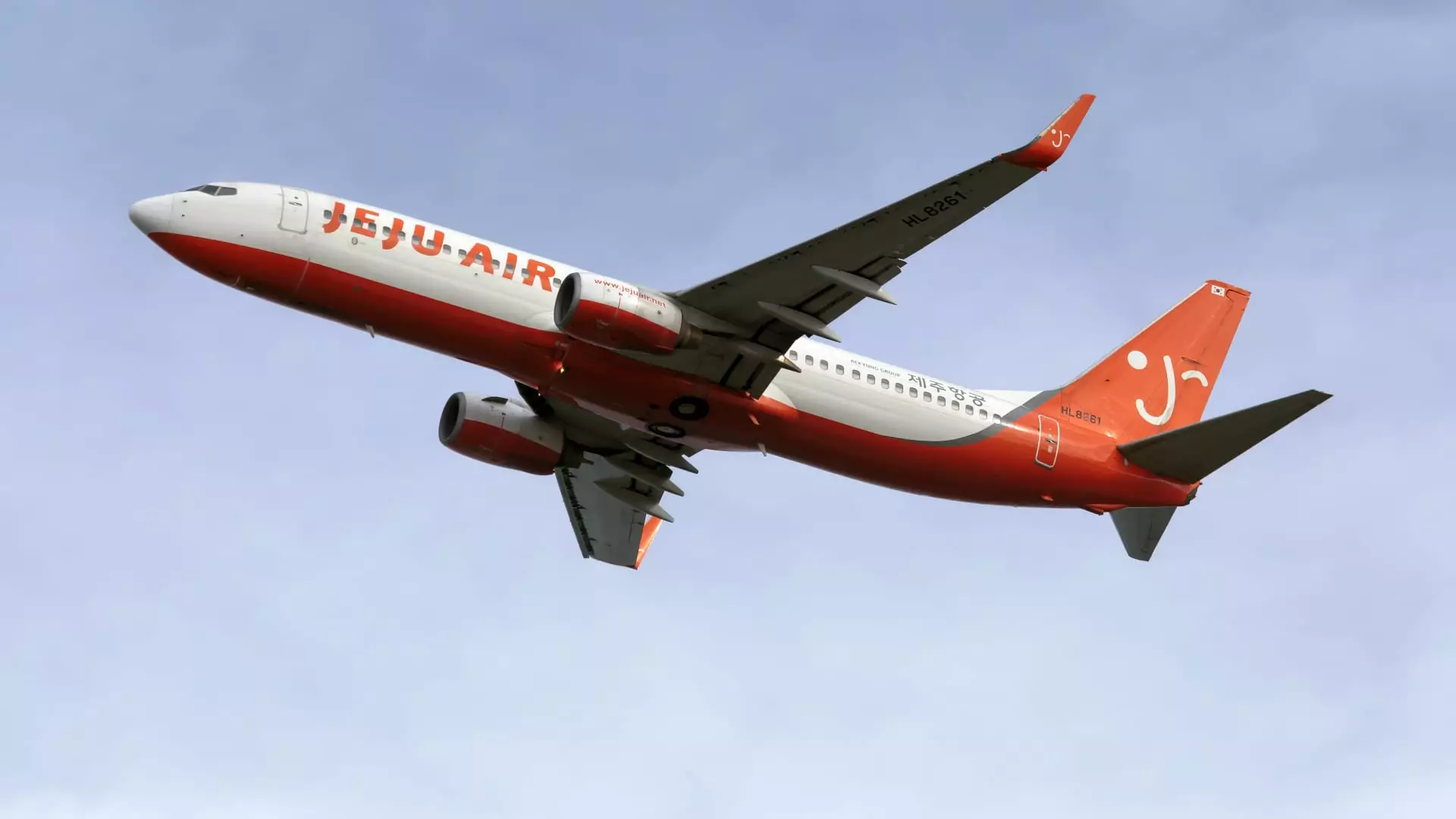The aviation industry was recently rocked by the heart-wrenching tragedy of Jeju Air Flight 7C2216, which belly-landed at Muan International Airport, resulting in the loss of all but two of the 181 souls on board. This incident marks South Korea’s most devastating air disaster in years, igniting widespread concern and scrutiny over aviation safety protocols and practices. As investigators sift through the debris of the disastrous event, numerous questions loom large, including the underlying causes of the plane’s failure to deploy landing gear.
The Role of Boeing 737-800: A Closer Examination
The aircraft involved in this tragic accident was a Boeing 737-800, a variant that constitutes a significant portion of the global commercial aviation fleet. Known for its impressive safety record, the Boeing 737-800 has been a workhorse for airlines across the globe. However, this incident raises pertinent questions about the reliability of even the most trusted aircraft. South Korea’s acting president, Choi Sang-mok, immediately mandated an emergency inspection of all 737-800s within the country, reflecting the gravity of this disaster and its implications for public confidence in air travel.
With nearly 4,400 Boeing 737-800s traversing the skies, this model accounts for approximately 17% of the world’s commercial passenger jet fleet. Despite its age—averaging around 13 years—the consensus among aerospace experts is that the crash was likely not a result of inherent design flaws. Industry analyst Richard Aboulafia argued that finding a design flaw at this juncture is “borderline inconceivable.” As the investigation unfolds, the prospects of identifying an innate fault in a long-established aircraft model seem increasingly slim.
What remains profoundly unsettling is the question of why the landing gear did not deploy as the aircraft approached the runway. Standard protocols allow pilots to manually release the landing gear, even in cases of hydraulic failure. This emphasizes the need for an extensive investigation into human factors, situational awareness, and technical malfunctions that could have contributed to such an unprecedented failure.
A possible bird strike is postulated as a contributing factor. Experts warn that if this were indeed the case, the resulting mayhem may have left the flight crew with insufficient time to respond to emergency procedures. The crucial seconds lost could prove fatal in emergency aviation scenarios.
Retired air safety investigator Jeff Guzzetti weighed in on the myriad complexities involved, noting that had the plane not collided with a hard wall at the runway’s end, the outcome could have been less catastrophic. His insights illuminate a broader spectrum of risks associated with emergency landings and the variables that can severely impact survival rates in such situations.
The multifaceted investigation into the cause of the accident promises to be a lengthy engagement, potentially exceeding a year. The National Transportation Safety Board (NTSB) is spearheading the U.S. investigation team, which includes Boeing and the Federal Aviation Administration (FAA). Since the aircraft was manufactured and certified in the United States, the NTSB’s involvement is pivotal. International protocols stipulate that while the country where the accident occurs leads the inquiry, having U.S. experts on board will lend additional rigor to the process.
As we await findings from this deeply complex investigation, public discourse surrounding aviation safety will likely intensify. Regulatory frameworks will come under scrutiny, and stakeholders will be forced to reassess existing aviation protocols and crisis management strategies.
The tragedy of Jeju Air Flight 7C2216 serves as a stark reminder of the vulnerabilities inherent in air travel. While the Boeing 737-800 is widely regarded as a safe aircraft, this calamity underscores the pressing need for continuous improvement in safety measures, effective pilot training, and swift crisis response protocols. As aviation stakeholders grapple with the implications of this heartbreaking event, the hope remains that it will pave the way for improved safety practices that protect the lives of passengers and crew alike from future tragedies.

